Our Library
Explore our publications, from research papers and series to educational materials, covering all aspects of conflict transformation and peace promotion.
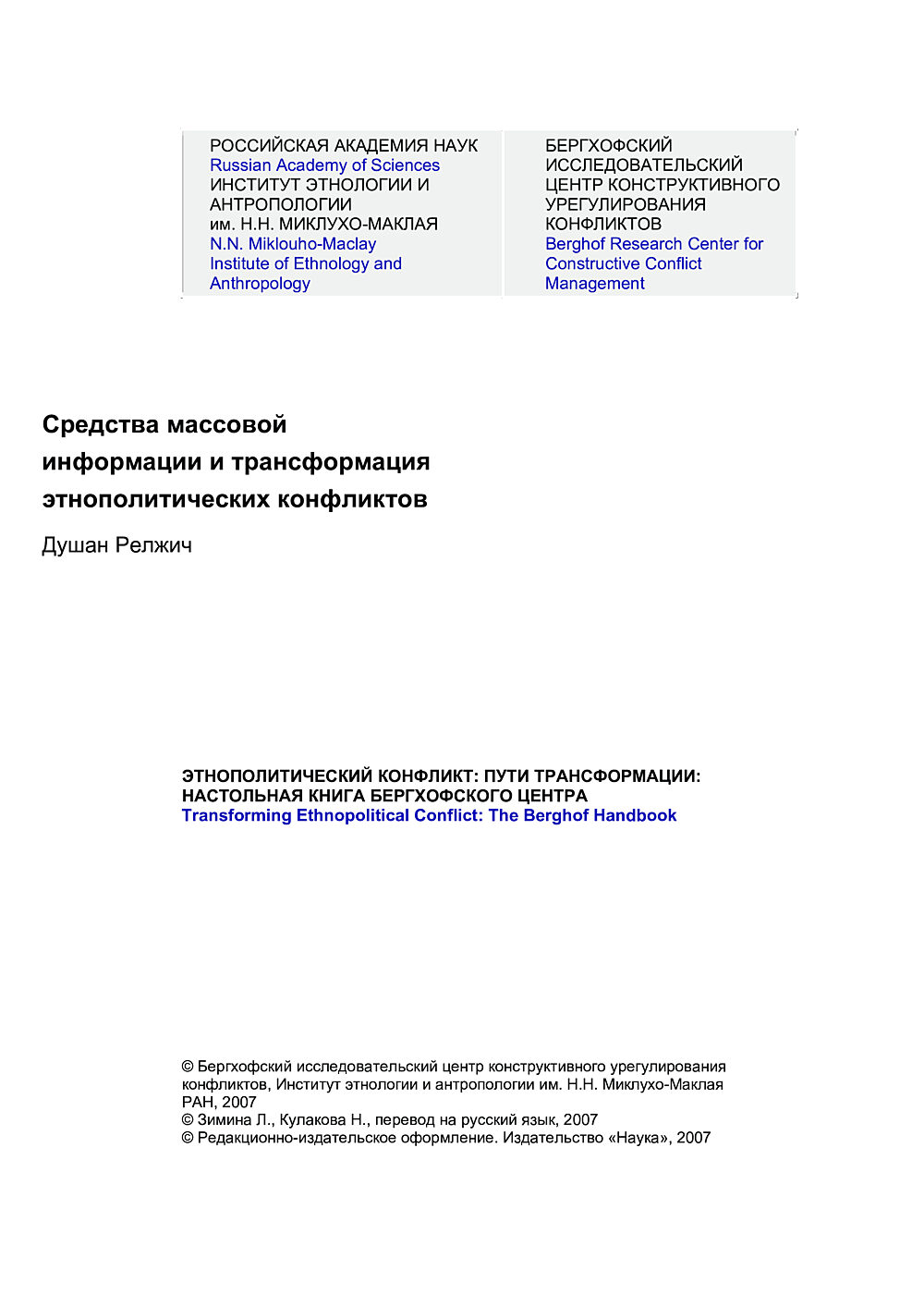
Средства массовой информации и трансформация этнополитических конфликтовHandbook Article
[Аннотация машинный перевод] Обсуждаются возможности и ограничения трансформации конфликтов посредством молодежной и образовательной работы. Автор исследует теоретические и концептуальные подходы, каталогизирует ключевые методологии, принципы обучения и желаемые результаты как для формального, так и для неформального образования. Она также решает текущие проблемы.
- Year2007
- Author(s)Dusan Reljic

පුවත් මාධ්ය සහ ජනවාර්ගීය දේශපාලන ගැටුම් ව්යාවර්තනයHandbook Article
[වියුක්ත යන්ත්ර-පරිවර්තනය] සාමය පෝෂණය වන අයුරින් ජනවාර්ගික දේශපාලනික ගැටුම් වාර්තා කිරීම සඳහා යෝජනා ඉදිරිපත් කරයි. කතුවරයා ජනමාධ්යයේ බලපෑම පැහැදිලි කිරීම සඳහා මූලික ආකෘතියක් ඉදිරිපත් කරයි, එසේම රාජ්ය නොවන සංවිධාන ක්රියාකාරකම් සහ යුරෝපීය මට්ටමින් ප්රතිසංස්කරණ ප්රයත්න සඳහා යෝජනාවක් සාකච්ඡා කරයි. (2004 මුද්රණ සංස්කරණය සඳහා සංශෝධනය කරන ලදි)
- Year2007
- Author(s)Dusan Reljic
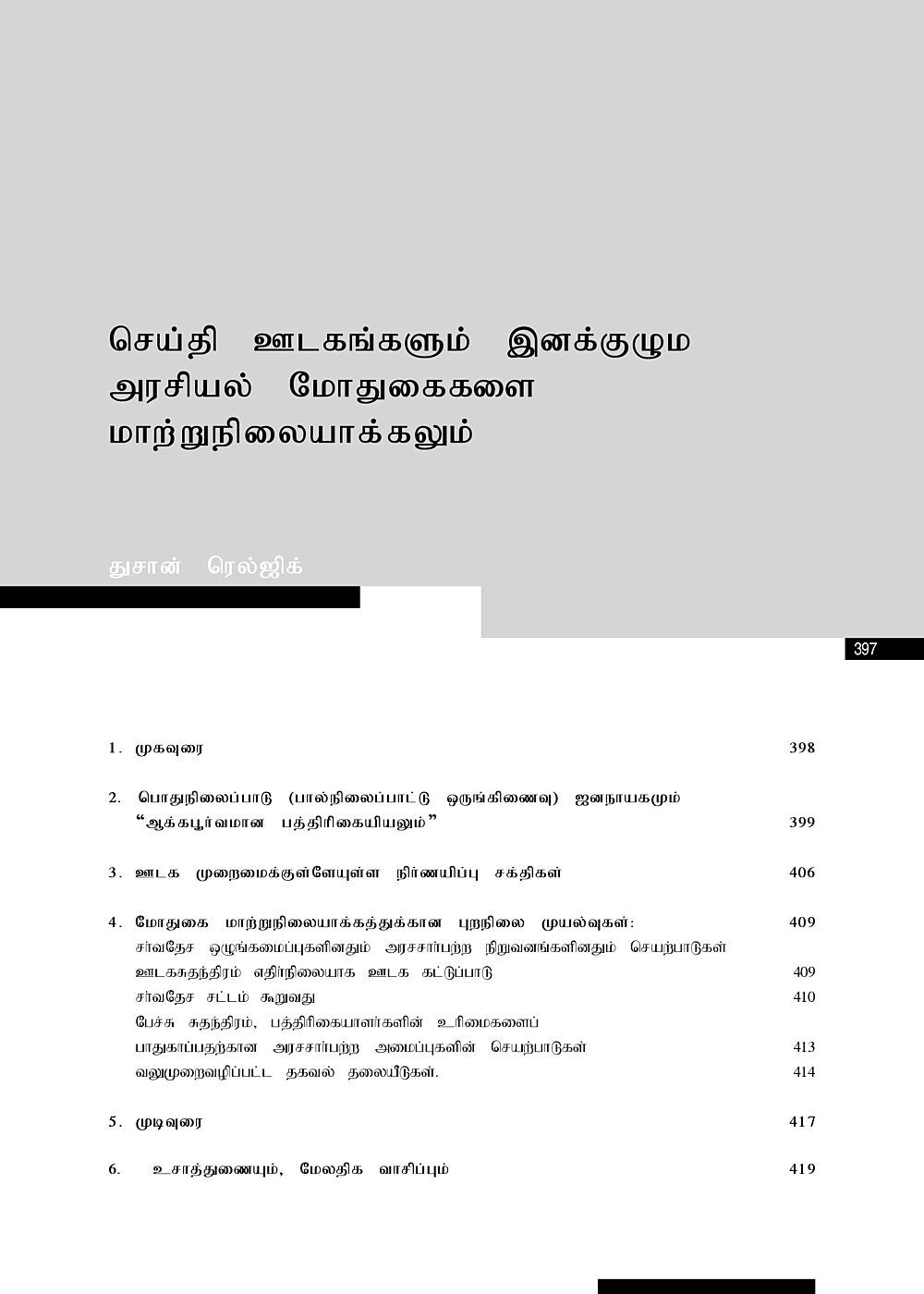
செய்தி ஊடகங்களும், இனக்குழும அரசியல் மோதுகைகளை மாற்றுநிலையாக்கலும்Handbook Article
[சுருக்கம் இயந்திரம் மொழிபெயர்க்கப்பட்டுள்ளது] சமாதானத்தை வளர்க்கும் வகையில் இன அரசியல் மோதல்களைப் புகாரளிப்பதற்கான திட்டங்களை முன்வைக்கிறது. ஊடகங்களின் தாக்கத்தை விளக்குவதற்கும், தன்னார்வ தொண்டு நிறுவனங்கள் மற்றும் ஐரோப்பிய மட்டத்தில் சீர்திருத்த முயற்சிகளுக்கான முன்மொழிவு பற்றியும் விவாதிக்க ஆசிரியர் ஒரு அடிப்படை மாதிரியை வழங்குகிறார். (2004 அச்சு பதிப்பிற்காக திருத்தப்பட்டது)
- Year2007
- Author(s)Dusan Reljic
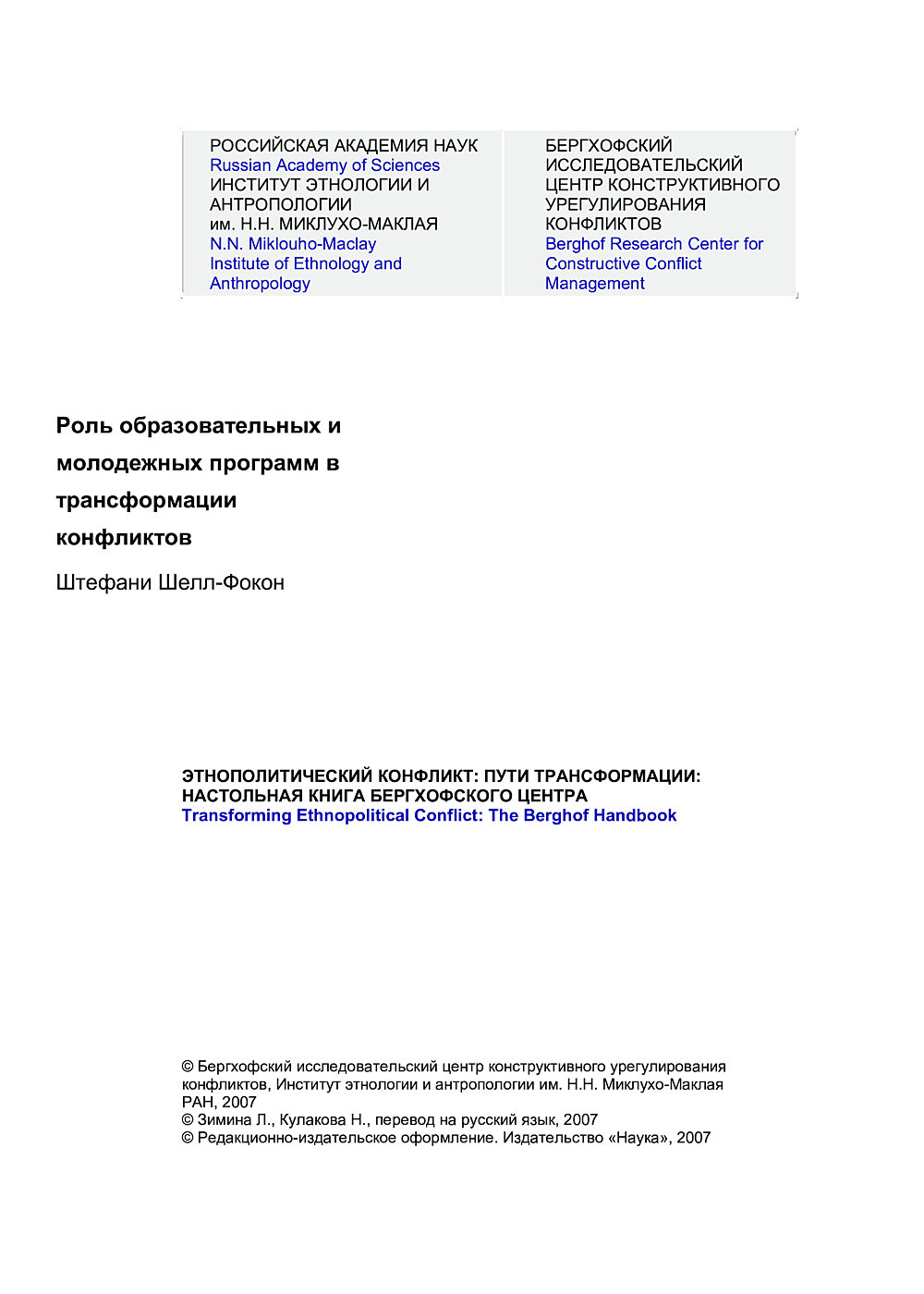
Роль образовательных и молодежных программ в трансформации конфликтовHandbook Article
[Аннотация машинный перевод] Обсуждаются возможности и ограничения трансформации конфликтов посредством молодежной и образовательной работы. Автор исследует теоретические и концептуальные подходы, каталогизирует ключевые методологии, принципы обучения и желаемые результаты как для формального, так и для неформального образования. Она также решает текущие проблемы.
- Year2007
- Author(s)Stephanie Schell-Faucon

Conflict Resolution and Reconciliation in the Arab World: The Work of Civil Society Organisations in Lebanon and MoroccoHandbook Article
- Year2007
- Author(s)Oussama Safa

После вооруженного конфликта: восстановление разрушенного и реинтеграция общества как элементы построениHandbook Article
[Аннотация машинный перевод] Утверждает, что (ре) интеграция беженцев и перемещенных лиц является одной из основных проблем и предварительным условием трансформации конфликта. В этом процессе необходимы совместные усилия, которые сочетают в себе развитие, экономические перспективы и расширение прав и возможностей местных субъектов для участия гражданского общества, воспитания в духе мира и социальной работы. Уроки Балкан показывают, что координация действий имеет решающее значение. (переработано для печатного издания 2004 г.)
- Year2007
- Author(s)Martina Fischer
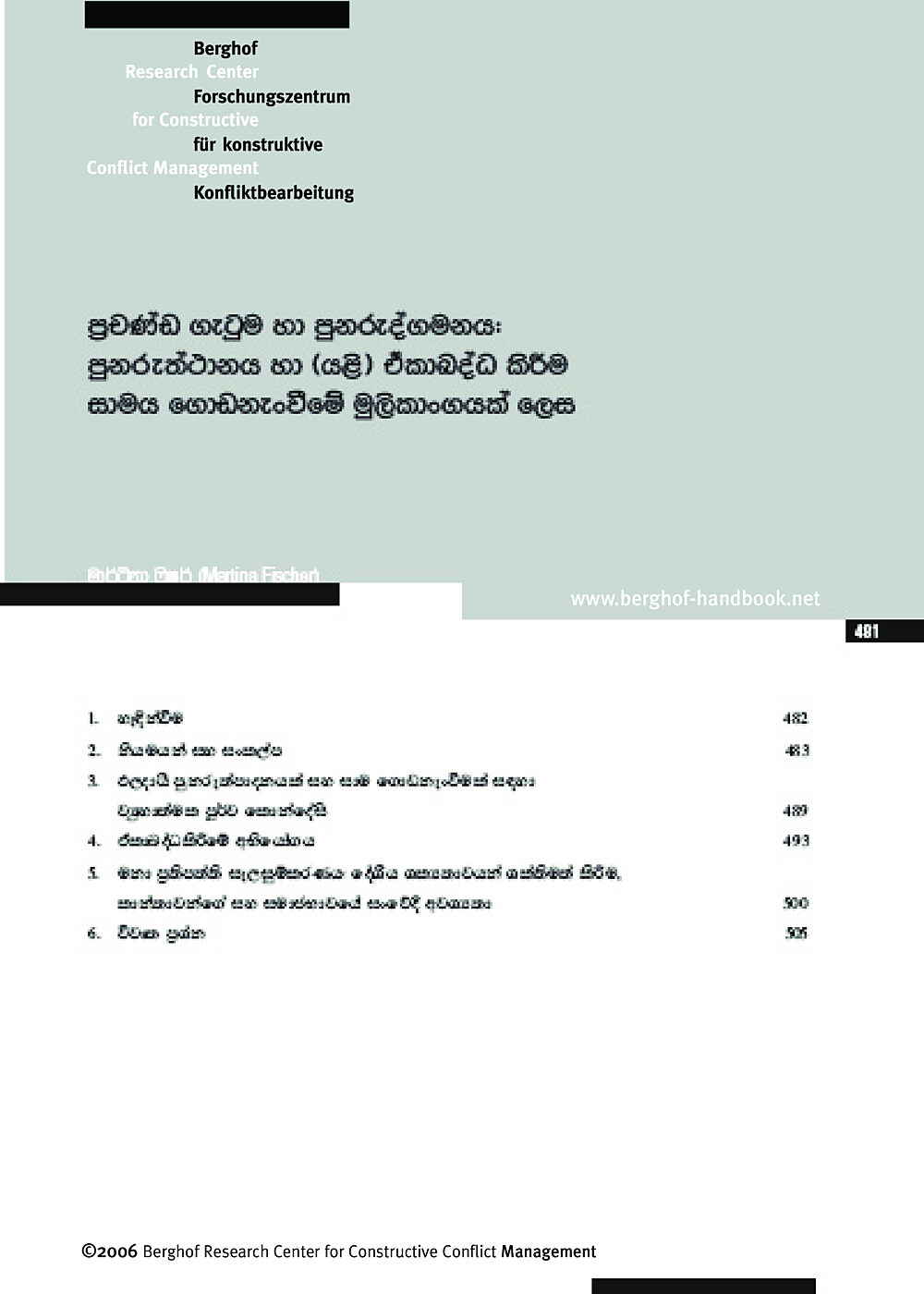
ප්රචණ්ඩ ගැටුම සහ පුනරුද්ගමනය: පුනරුත්ථාපනය හා (යළි) ඒකාබද්ධ කිරීම සාමය ගොඩනැංවීමේ මූලිකාංගයක් ලෙසHandbook Article
[සාරාංශ යන්ත්රයෙන් පරිවර්තනය කරන ලද] සරණාගතයින් සහ අවතැන්වූවන් නැවත ඒකාබද්ධ කිරීම ප්රධාන අභියෝගයක් වන අතර ගැටුම් පරිවර්තනය සඳහා පූර්ව කොන්දේසියකි. මෙම ක්රියාවලියේදී සිවිල් සමාජ සම්බන්ධතා, සාම අධ්යාපනය සහ සමාජ වැඩ සඳහා සංවර්ධනය, ආර්ථික ඉදිරිදර්ශනය සහ දේශීය ක්රියාකාරීන් සවිබල ගැන්වීම ඒකාබද්ධ කිරීමේ උත්සාහයන් අවශ්ය වේ. ක්රියාකාරකම් සම්බන්ධීකරණය ඉතා වැදගත් බව බෝල්කන් පාඩම් වලින් පැහැදිලි වේ. (2004 මුද්රණ සංස්කරණය සඳහා සංශෝධනය කරන ලදි)
- Year2007
- Author(s)Martina Fischer
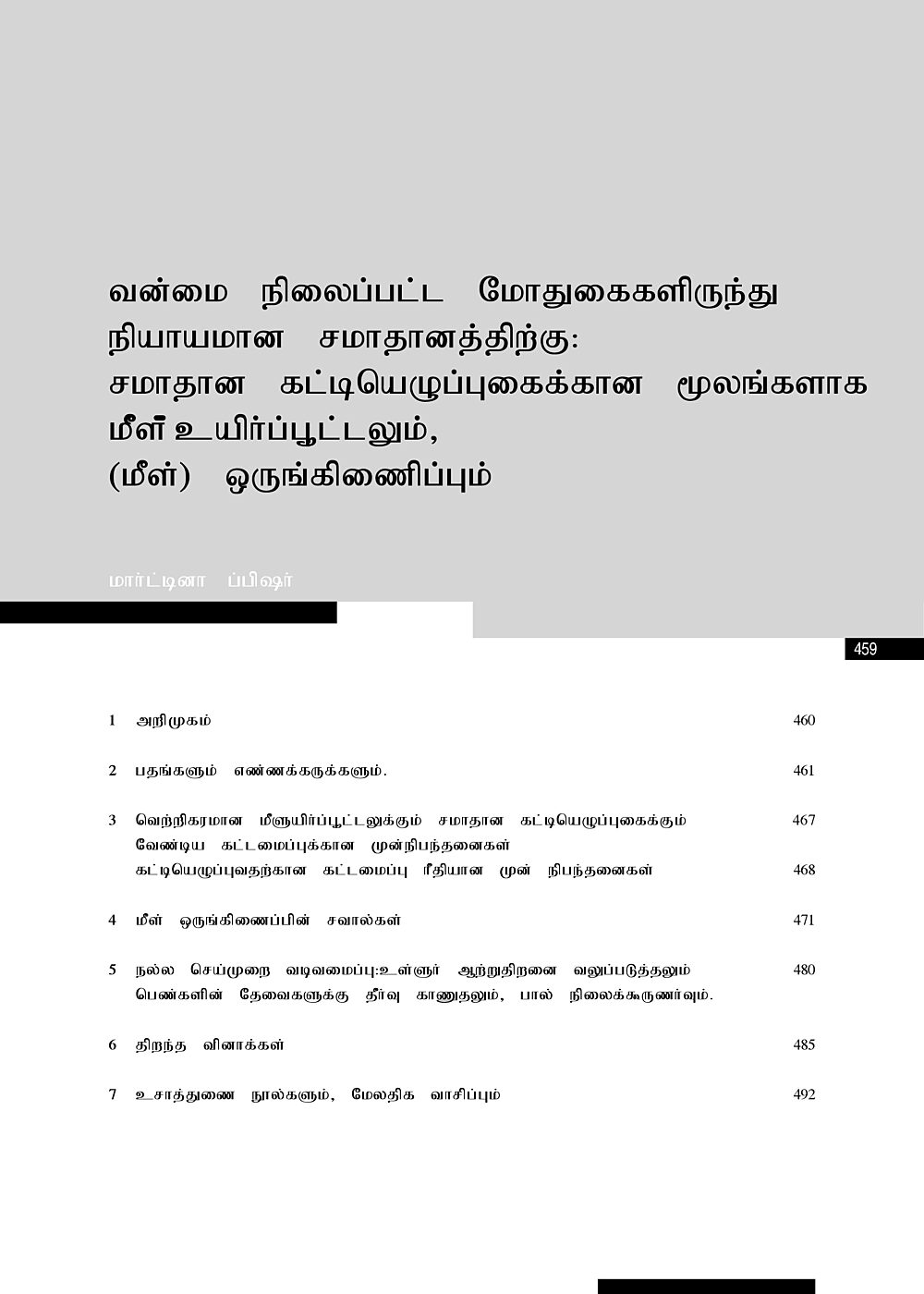
வன்மை நிலைப்பட்ட மோதுகைகளிருந்து நியாயமான சமாதானத்திற்கு: சமாதான கட்டியெழுப்புகைக்கான மூலங்களாக மீள்உயிர்ப்பூட்டலும் (மீள்)ஒருங்கிணைப்பும்Handbook Article
[சுருக்கம் இயந்திரம்-மொழிபெயர்க்கப்பட்ட] அகதிகள் மற்றும் இடம்பெயர்ந்த நபர்களை (மறு) ஒருங்கிணைப்பது முக்கிய சவால்களில் ஒன்றாகும் மற்றும் மோதல் மாற்றத்திற்கான ஒரு முன் நிபந்தனையாகும். இந்த செயல்பாட்டில், சிவில்-சமூக ஈடுபாடு, அமைதி கல்வி மற்றும் சமூகப் பணிகளுக்கு உள்ளூர் நடிகர்களின் வளர்ச்சி, பொருளாதார முன்னோக்குகள் மற்றும் அதிகாரம் ஆகியவற்றை இணைக்கும் கூட்டு முயற்சிகள் தேவை. நடவடிக்கைகளின் ஒருங்கிணைப்பு முக்கியமானது என்பதை பால்கன் பாடங்கள் விளக்குகின்றன. (2004 அச்சு பதிப்பிற்காக திருத்தப்பட்டது)
- Year2007
- Author(s)Martina Fischer

Помощь жертвам организованного насилия: работа с психической травмойHandbook Article
[Аннотация машинный перевод] Обсуждает теории травм, опираясь на практический опыт Латинской Америки и Балкан. В нем утверждается, что концепции травмы необходимо постоянно изобретать заново, связывая их с конкретным контекстом. Автор предполагает, что травматологическая работа должна быть частью комплексного подхода в кризисных регионах и должна учитывать психологические, педагогические и экономические аспекты. (переработано для печатного издания 2004 г.)
- Year2007
- Author(s)David Becker
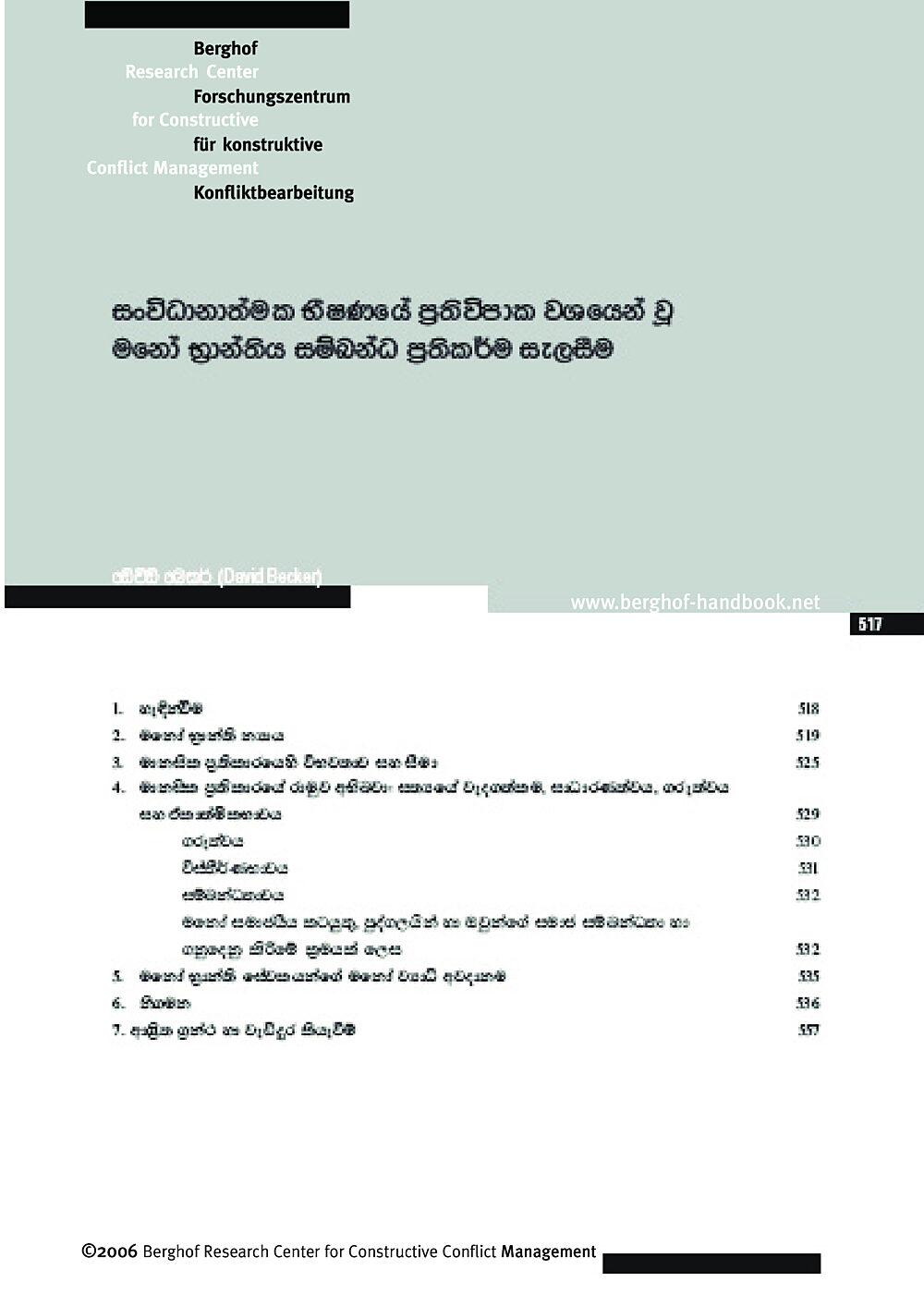
සංවිධානාත්මක භීෂණයේ ප්රතිවිපාක වශයෙන් වූ මනෝභ්රාන්තිය සම්බන්ධ ප්රතිකර්ම සැලසීමHandbook Article
[වියුක්ත යන්ත්ර-පරිවර්තනය] ලතින් ඇමරිකාවේ සහ බෝල්කන්වල ප්රායෝගික අත්දැකීම් ලබා ගැනීමෙන් කම්පනය පිළිබඳ න්යායන් සාකච්ඡා කරයි. කම්පන සංකල්ප නිශ්චිත සන්දර්භයට සම්බන්ධ කරමින් අඛණ්ඩව ප්රතිනිර්මාණය කළ යුතු බව එය තර්ක කරයි. කතුවරයා යෝජනා කරන්නේ කම්පන කටයුතු අර්බුද කලාපවල ඒකාබද්ධ ප්රවේශයක කොටසක් විය යුතු අතර මානසික, අධ්යාපනික හා ආර්ථික මානයන් පිළිබඳව අවධානය යොමු කළ යුතු බවයි. (2004 මුද්රණ සංස්කරණය සඳහා සංශෝධනය කරන ලදි)
- Year2007
- Author(s)David Becker